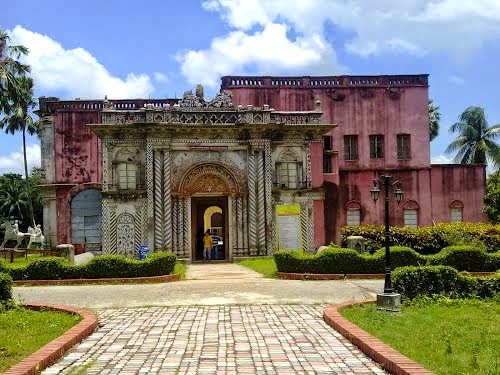Narayanganj(নারায়ানগঞ্জ) is arranged adjacent to the stream Shitalakkha and this waterway has an imperative part for transportation, uncommonly for convey the exchanging products. It was same even 300 years back. The waterway was the primary channel for any arriving gatherings whoever uses to come here. To ruin any undesirable sections through this waterway, a few observatory strongholds have been assembled around. The Sonakanda(সোনাকান্দা) Fort is one of those observatory fortresses.
It is questionable about the developer of the fort(though numerous individuals trust it was Mir Jumla(মীর জুমলা)). In any case it is sure that the fortification was fabricated amid the seventeenth century, at the Mughal(মোঘল) period. This fortification is contemporary to the Idrakpur Fort and the Hajiganj Fort.
This is a rectangular molded fortification having a solitary doorway at the northern side. General passage resembles a rectangular shape however has an entrance inside this. There is a high round stage is accessible at the western side of the fortress that is utilized to keep the substantial cannons. This round stage is confronting towards the stream Sitalakkha(শীতলক্ষা নদী). There is a stair accessible slanted with the stage to ascend.
Separated from the principle roundabout stage, there are an alternate four little lower platform(bastions) is accessible at the four corners of the fortification. The dividers of the stronghold are thick and having delegated by one meter stature curve formed articles. Dividers are having part of gaps for watching and indicating the guns. There is no characteristic of any lasting structure or anything comparable inside the stronghold. Presently a days the empty ground inside the fortress is continuously utilized as a play area by local people.
Instructions to Go:
Shonakanda(সোনাকান্দা) Fort is not difficult to get to from Dhaka as Narayanganj(নারায়ানগঞ্জ) town is contiguous the Dhaka city. Nearby individuals basically know this as Kella(কেল্লা). So on the off chance that you are discovering any challenges, simply approach them for Kella(কেল্লা) rather than Sonakanda Fort(সোনাকান্দা দুর্গ). The following is a basic heading that will be helpful for you to place the fortification.1) Come to the Chashara(চাষাড়া) of Narayanganj(নারায়ানগঞ্জ) utilizing BRTC or any comparative transports from Gulistan(গুলিস্তান). Its around 40 taka for every individual.
2) Take a rickshaw and go to the Bondor Ghat(বন্দর ঘাট), otherwise called Narayanganj(নারায়ানগঞ্জ) Launch Terminal. Its around 15-20 taka Rickshaw fare
3) Cross the river using the boats, per person 1-2 taka.
4) Take a rickshaw and ask the driver to drop you near at the Kella(কেল্লা).





.jpg)





